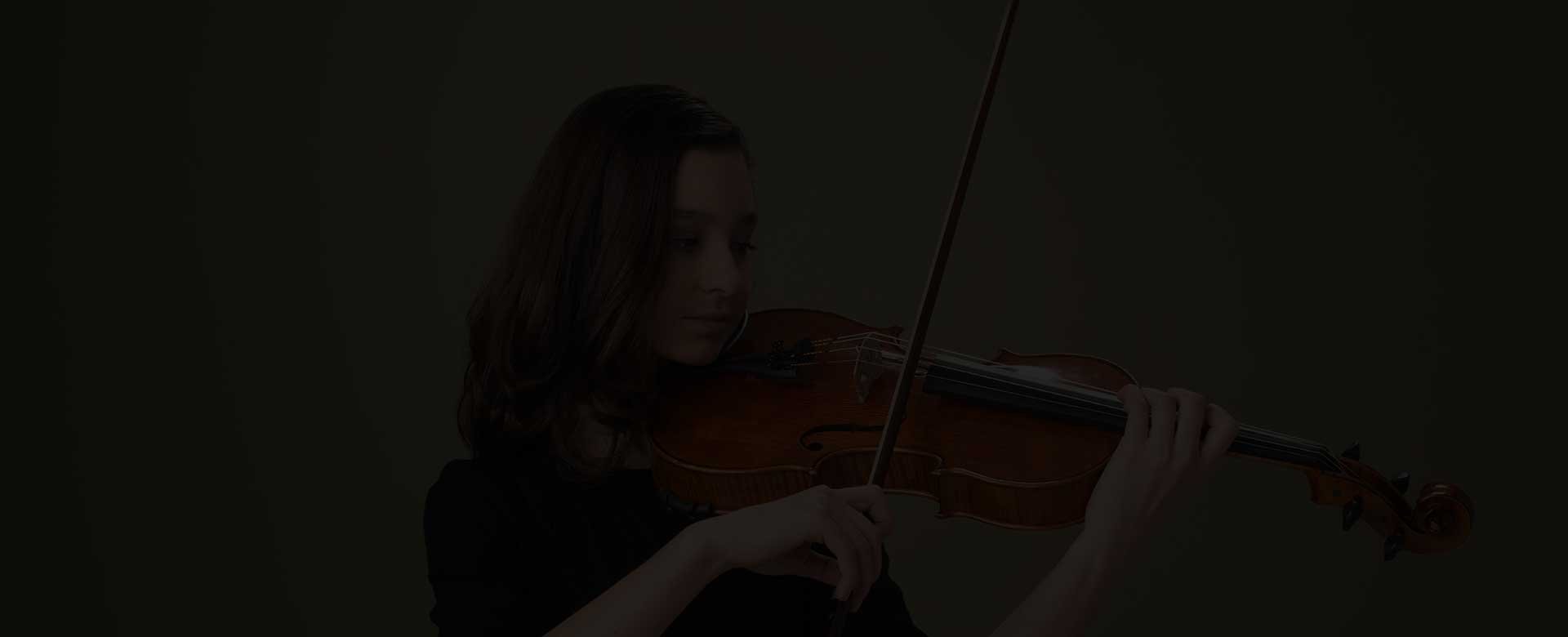
V. RICHELIEU VIOLINS & VIOLAS - SOUND EXPERIENCE
SOUND TEST - BY PROFESSIONALS
V. RICHELIEU VIOLINS & VIOLAS
Each V. RICHELIEU™ instrument is uniquely crafted to make each piece of wood sing in full voice. The instruments are built in Vermont to combine over 80 years of experience with unique hand graduations and a beautiful hand-painted oil varnish of our own proprietary formulation. The instruments are built by the luthiers in our workshops. Each plate is graduated relative to the stiffness and flexibility of the tonewood.
We sent out our V. Richelieu instruments for evaluation to some of the leading industry professionals in the USA. Hear them test and play the V. Richelieu violins and violas.
RACHEL SEGAL, EXECUTIVE DIRECTOR, THE PRIMAVERA FUND
OLIVER SCANLON, FIDDLER, PETE’S POSSE
MARGARET SOPER GUTIERREZ, ASSISTANT CONCERTMASTER, OPERA COLORADO
JOSEPH ARNOLD, CO-FOUNDER, SOULFORCE MUSIC SCHOOL
KATIE GLASMAN, A FIDDLE CHAMPION AND SINGER-SONGWRITER
COLIN GARNER, DALLAS OPERA
ANDREW KRIMM, EXECUTIVE DIRECTOR/BOULDER SYMPHONY ORCHESTRA
MICHAEL KLOTZ - SENIOR INSTRUCTOR AND ARTIST-IN-RESIDENCE AT FLORIDA INTERNATIONAL UNIVERSITY IN MIAMI
VIOLIN SHOP PHILADELPHIA, PA. - V. RICHELIEU PARTNER
V. RICHELIEU HEAD LUTHIER & INSTRUMENT MAKER
LETITIA QUANTE, VERMONT SYMPHONY ORCHESTRA
The Versatile and Timeless Beauty of Violins
The violin is a string instrument that has been played for centuries and has evolved into one of the most versatile and popular instruments in the world. From classical music to folk, jazz, and even popular music, the violin has been used in many different genres and styles, making it a timeless masterpiece of the strings.
History and Origin of Violins
The history of the violin can be traced back to the early 16th century in Italy, where it was developed by master luthiers like Andrea Amati, Gasparo da Salò, and Giovanni Maggini. The violin's design has remained largely unchanged since then, with its characteristic curvy shape, four strings, and chinrest.
The violin's popularity quickly spread across Europe, and by the 18th century, it had become one of the most important instruments in classical music. Many of the greatest composers, such as Bach, Mozart, and Beethoven, wrote music specifically for the violin.
The Structure of a Violin
The violin is made up of several parts, including the body, neck, and headstock. The body is made from a combination of woods, including spruce, maple, and ebony, and is shaped like an hourglass. The strings are made of steel or synthetic materials and are stretched over the bridge and fingerboard.
Playing a Violin
Playing a violin requires both skill and technique. The player holds the instrument between their chin and shoulder, and uses a bow made of horsehair to produce sound. The player can also use their fingers to produce different tones by pressing down on the strings.
Famous Violinists
Throughout history, many famous violinists have made their mark on the world of music. One of the most famous violinists of all time is Niccolò Paganini, who was known for his incredible virtuosity and showmanship. Other famous violinists include Itzhak Perlman, Joshua Bell, and Anne-Sophie Mutter.
Conclusion
The violin is a versatile and timeless instrument that has been played and appreciated for centuries. Its rich sound and ability to convey emotions have made it a staple in many different genres of music. Whether you are a classical music lover or a fan of popular music, the violin is sure to capture your heart and soul.
The Viola: A Powerful and Expressive String Instrument
The viola is a beautiful and versatile string instrument that is often overlooked in favor of its more famous cousin, the violin. However, the viola has its own unique sound and character that has made it a favorite among musicians and composers alike.
History and Origin of Violas
The viola has a long and storied history that can be traced back to the 16th century in Italy. Like the violin, the viola was developed by master luthiers like Andrea Amati, Gasparo da Salò, and Giovanni Maggini. The viola's design is similar to the violin, but it is slightly larger and has a deeper, richer sound.
Structure of a Viola
The viola is made up of several parts, including the body, neck, and headstock. The body is usually made from a combination of woods, including spruce, maple, and ebony. The strings are typically made of gut or synthetic materials, and are stretched over the bridge and fingerboard.
Playing a Viola
Playing the viola requires both skill and technique. The player holds the instrument between their chin and shoulder, and uses a bow made of horsehair to produce sound. The player can also use their fingers to produce different tones by pressing down on the strings.
Famous Viola Players
Over the years, many famous musicians have played the viola, including William Primrose, Lionel Tertis, and Yuri Bashmet. The viola has also been featured in many famous orchestral works, such as Mozart's "Sinfonia Concertante" and Berlioz's "Harold in Italy."
Why Choose the Viola?
The viola is a powerful and expressive instrument that offers a unique sound and character. Its larger size and deeper sound make it perfect for playing lower-register parts in an orchestra or chamber ensemble. It also has a warm and rich tone that is perfect for playing solos and expressive passages.
Conclusion
The viola is a beautiful and versatile instrument that is often overlooked in favor of the violin. However, its unique sound and character make it a favorite among musicians and composers alike. Whether you are a professional musician or just starting out, the viola is a powerful and expressive instrument that is sure to capture your heart and soul.












